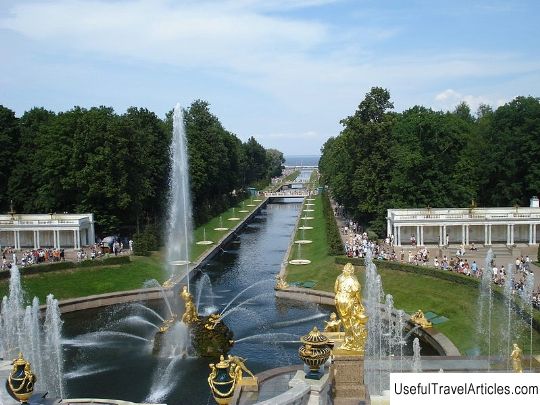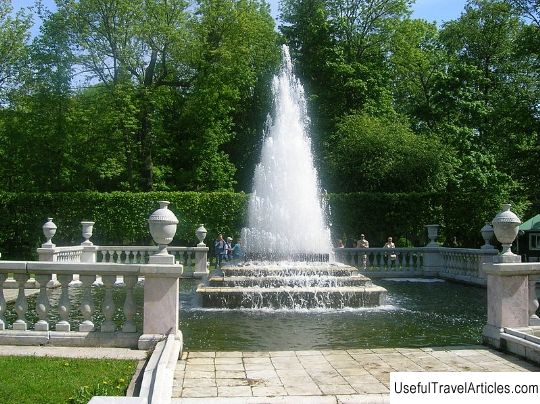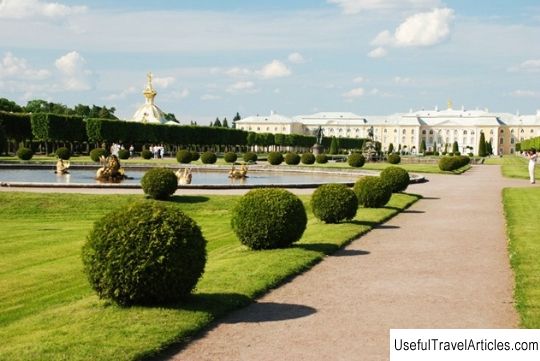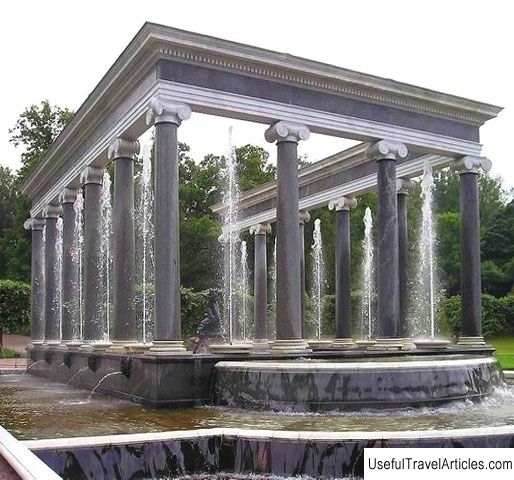Big greenhouse description and photo - Russia - St. Petersburg: Peterhof
Rating: 8,3/10 (921 votes) 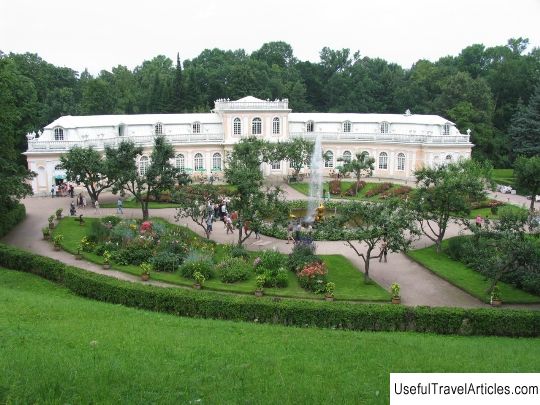
Big greenhouse description and photos - Russia - St. Petersburg: Peterhof. Detailed information about the attraction. Description, photos and a map showing the nearest significant objects. Photo and descriptionThe Big Festive Greenhouse, located in the Lower Park of the Peterhof palace and park ensemble, was designed to grow unique exotic flowers and store overseas plants in winter, which were placed in tubs in summer and pots for decorating palaces, parterres, grottoes and fountain pools. The author of the Big Greenhouse project was most likely Niccolo Michetti, and Johann Friedrich Braunstein and Mikhail Grigorievich Zemtsov supervised its implementation. Construction of the Big Greenhouse began in the spring of 1722 and continued until the end of 1725, when the roof of the pavilion was covered sheet metal, which was delivered from the Ural factories of the Demidovs. In the plan, the building is semicircular, its external appearance does not in any way remind of its practical purpose. In terms of its decor and size, the Great Greenhouse was not inferior to the Peter's seaside palaces, and even stood out among them in the framing of the facade. The division of the building is characterized by clarity: a slightly raised middle part is connected by the wings of the galleries with the pavilions that end them, the so-called lusthaus. The pavilion's southern facade wall is cut through by a continuous row of semicircular windows, which are separated from each other by smooth Doric pilasters. the second floor of the central part is decorated with composite pilasters. The facades of the side buildings are decorated with niches. There are large vases on the balustrades that flank the entire roof. The curly frames of the dormer windows are decorated with vases of a different type. The northern facade of the pavilion is distinguished by the absence of windows, its wall is processed only with rusticated shoulder blades. In the middle of the garden you can see the sculptural group "Triton tearing the mouth of the sea monster." In the center of the pool, on a tuff pedestal, there is a sculpture of Triton (in Greek mythology, Triton was the son of the god of the seas, Poseidon and the Nereid Amphitrite). He forcefully tears the mouth of the sea monster with his muscular arms, from which a stream of water 8 meters high erupts. So in a simple but dynamic form, back in 1726, the sculptor Bartolomeo Carlo Rastrelli allegorically depicted the naval victories of our country over Sweden. The initial project of the fountain was made by the architect T. Usov, and their restoration after the Great Patriotic War in 1956 was carried out by A. Gurzhiy (according to drawings and drawings of the 18th century). In 1769-1770, the Big Greenhouse was expanded according to the project of I. Yakovlev: on the southern side, side wings with absolutely glazed walls were attached. Back in 1722, in a single composition with the Greenhouse on the slope of the mountain, it was conceived to build a large semicircular a stone building - a cellar for keeping flower tubers. At the beginning of autumn 1725, the construction of the cellar was completed. In appearance, the cellar looked like a garden grotto. In 1728–1729, its facade was finished with tuff, and the roof was decorated with a balustrade. The cellar existed until 1814, when it collapsed due to old age and was dismantled. The niche at the site of the cellar was filled up and covered with sod. In the 19th century, after the construction of new stone greenhouses in the English Park, greenhouses and greenhouses from the Lower Park began to move there. In the Great Greenhouse, only “overseas figured trees and colorful bushes of various titles have survived.” During the Second World War of 1941-1945, the Great Greenhouse was destroyed. In 1954, based on the drawing of the first quarter of the 18th century, it was recreated by the architect Vasily Mitrofanovich Savkov; vases restored by A.F. Gurzhiy based on drawings by A.I. Alymova.         We also recommend reading Chaplins' house description and photos - Russia - Saint Petersburg: Saint Petersburg Topic: Big greenhouse description and photo - Russia - St. Petersburg: Peterhof. |
